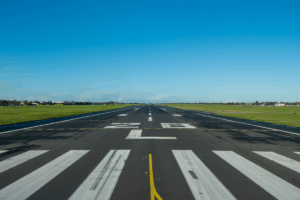提到机场照明系统,人们脑海中往往会浮现出交通繁忙的跑道和复杂的照明系统,这些系统在大型飞机着陆和在繁忙的停机坪上滑行时为飞行员提供导航帮助。
肯尼迪国际机场、奥黑尔机场和希思罗机场等大型机场拥有高科技跑道基础设施是必然的。然而,类似系统对提高数千个小型和地区机场的安全和效率的重要性也不容忽视,这些机场是国家和地方航空网络的骨干。
许多这类机场所面临的挑战是,它们的运营人员极少,基础设施往往老化,有时预算有限,投资先进的跑道照明是一种负担不起的奢侈行为。
然而,事实上,采用现代技术来帮助管理飞机的运行不应被视为一种成本,而应被视为一种投资。先进的灯光跑道系统不仅能提高机场的安全性和运营效率,还能为小型机场的发展战略带来巨大的机遇。
确保紧急情况下的公共安全
飞行员非常依赖跑道边灯、门槛灯、进场照明系统和旋转信标来导航飞机安全抵达机场,尤其是在夜间或恶劣天气下。它们还能帮助飞行员成功地沿着停机坪移动,避免撞机。
然而,许多较小的机场缺乏足够的系统,无法在非日间时段或能见度较低时使用机场。如果没有适当的照明基础设施,飞行员可能会误判距离、偏离跑道,甚至完全找不到跑道的位置,尤其是在缺乏其他导航辅助设施(如照明良好的建筑物或高速公路)的偏远地区的机场。
在医疗危机、救灾行动或救生任务中,时间就是生命,这种情况会对定期航班和当地应急响应行动产生深远影响。所有机场,无论大小或位置如何,都必须做好充分准备,以支持当地的紧急需求,并减轻突发灾难的影响。
阅读更多 机场照明在航空安全中的关键作用
机场照明如何支持小型机场的发展
当然,安全和效率是机场使用跑道照明系统的主要原因。然而,规模较小的机场也可以利用该技术来实现这些目标,并释放增长潜力,从而随着时间的推移获得更大的利润。
例如,强大的跑道照明系统支持夜间飞行,这将提高机场的运输能力。允许安全的夜间飞行将补充定期航班的不足,并为其他需要立即进入或灵活安排时间的空中交通(如医疗或紧急航班、包机、商务旅行,甚至飞行培训学校)开放机场。
允许 24 小时运营还能提高货物处理能力,从而吸引货运公司的航空运输。
此外,扩大较小机场的运营时间可以吸引更多投资者,使其不仅成为航空交通枢纽,还能提供增加收入的宝贵机会。
为得不到充分服务的社区带来公平
在大城市中心,当地居民大多将当地的国际机场视为另一个交通枢纽。旅客可以享受到最先进的跑道照明系统和其他便利设施,这些都是较偏远地区的小型机场所不具备的。
然而,农村、偏远或其他服务不足地区的支线机场不仅仅是通往下一个航班的门户。它们是连接世界其他地区的重要纽带。在某些情况下,它们是一条真正的生命线,社区所需的物资和经济支持通过它们到达。它们也是人们从城市医疗机构寻求紧急医疗护理的主要交通方式。
然而,尽管这些地区机场对其所在社区至关重要,但许多机场的跑道照明系统已经过时,不符合标准,限制了它们为当地居民提供服务的能力。
对现代化跑道灯光基础设施的投资表明,这些社区及其需求是重要的,并肯定了农村机场的安全与主要城市中心的安全一样受到重视。
利用经济高效的跑道照明解决方案创造利润
预算有限的小型机场可以获得定制的、具有成本效益的解决方案,以提高其运营的安全性和效率,并切实帮助其实现盈利。
例如,与传统的卤素灯或白炽灯系统相比,LED 机场照明系统耗电少得多,寿命长得多,所需的维护也少得多。事实上,通过降低能源成本和减少维修次数,小型机场可以在几年内收回对 LED 技术的投资。
Airport Lighting Company 的专家团队可以帮助您定制设计高质量的跑道照明和供电系统,满足您的预算要求,使您更接近未来的发展计划。请随时致电我们,我们非常乐意为您提供专业建议,并为您提供高科技解决方案,以提高您的运营效率。
阅读更多 关于 Airport Lighting Company
请致电 Airport Lighting Company,了解最新的机场照明技术
Airport Lighting Company 团队是 随时准备回答您的问题 了解我们的技术产品如何帮助您提高跑道的安全性、可靠性和效率。请致电 315-682-6460,我们将为您提供快速、友好的服务。


